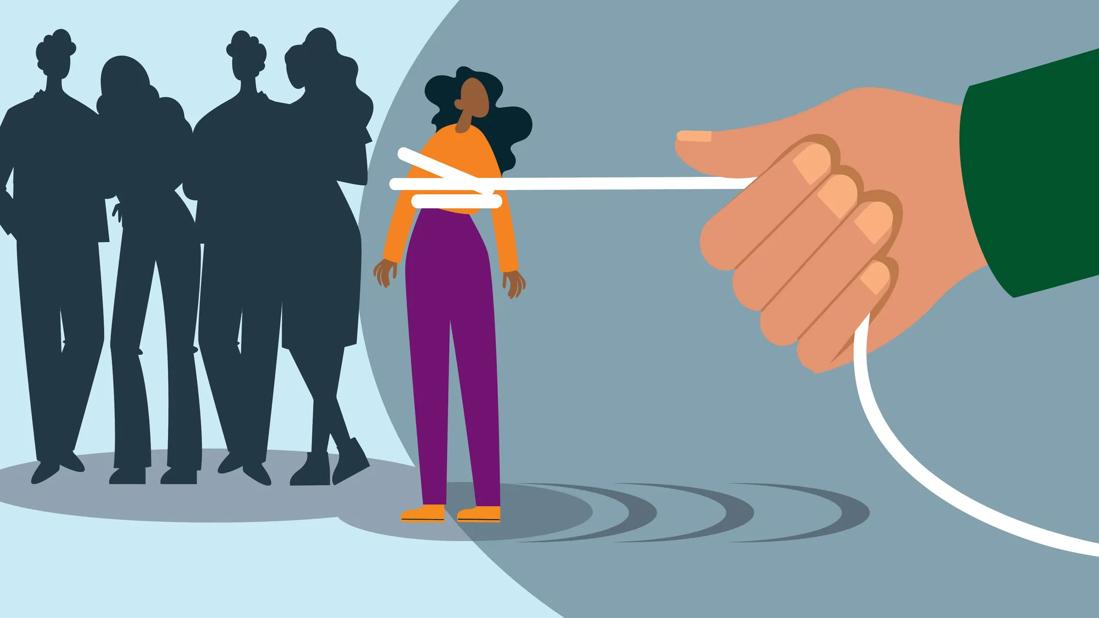This process of manipulation and abuse can stem from what may initially seem to be an innocent relationship with a stranger or adult authority figure

Grooming is defined by the very intentional process of building a relationship with a child or a vulnerable adult with the goal of manipulation, exploitation or abuse. The broader aim of grooming is to manipulate and gain power and control over a “target” for the groomer’s personal benefit. And a groomer will rely on a number of tactics to take advantage of their target, including:
Advertisement
Cleveland Clinic is a non-profit academic medical center. Advertising on our site helps support our mission. We do not endorse non-Cleveland Clinic products or services. Policy
While sexual abuse is the most common goal for grooming, a groomer may have other objectives that involve different types of exploitation in a cycle of abuse. Other motives for grooming may include:
“Grooming can be done in person or online. It can be done very abruptly on a one-time basis or it can be done strategically over time,” explains pediatric psychologist Vanessa Jensen, PsyD.
“Sometimes, it may start in a way that seems innocent with someone like a mentor or with someone who’s an authority figure. Importantly, it’s almost always in secret, without transparency.”
To protect your children and yourself, Dr. Jensen shares some of the signs of grooming and how to talk to your children about these potential dangers.
“Some of the techniques used in grooming are often meant to isolate children by tainting their positive relationships through the introduction of doubt about the safety and security of their own relationships, especially with family,” explains Dr. Jensen.
Advertisement
“The ‘groomer’ exploits the natural and developmentally appropriate kinds of frustrations and challenges kids may have about their parents or their peers.”
For example, as a child or teen becomes more independent, it’s natural for them in some ways to pull away from their parents. But a groomer will see this as an opportunity to further the divide between parent and child. They may take advantage of them by provoking further conflict, inflicting shame on their behaviors and relationships with their family and friends, and implying that the groomer is the only one who truly cares for them (unlike their “old” support systems).
As someone becomes more reliant on the support of the groomer and the relationship progresses, the groomer often introduces shame and guilt into the relationship so their target feels less inclined to discuss what occurs between them — in person, online or through other means of conversation. With this kind of isolation comes increased trauma responses and changes in behavior.
When grooming occurs, multiple warning signs can emerge. Some common warning signs of grooming include, but aren’t limited to, things like:
“Having knowledge about your kids, what they’re doing and their physical whereabouts is so important,” stresses Dr. Jensen. “If you notice that they’re having relationships with older peers, that they’re spending more time online or that they’re being more secretive and guarded, these may be concerns that something is going on behind the scenes. At the same time, all of these behaviors are normal to some degree — the better you know your child, the more likely you are to notice any changes.”
“We want to set our children up for success and we want them to have positive mentoring relationships,” empathizes Dr. Jensen. “One thing that’s really important is to teach kids to listen to their own warning bells.”
If something is happening in a relationship or interaction where they feel like something is off or they’re uncomfortable, teach and encourage your children to listen to those instincts.
“We should encourage them to trust themselves and come to us if they don’t know whether or not they can trust themselves,” advises Dr. Jensen.
Other things you can do to protect your child include:
Advertisement
“The best way to do this is to really monitor what your kids are on, what they are using, who they’re interacting with and where they’re going,” explains Dr. Jensen. “You want to have open discussions about all of these things. And if they have questions or concerns, they should understand that they can come to you without judgment and you will figure out the answers together.”
Advertisement
Learn more about our editorial process.
Advertisement

It’s common to experience long-term emotional effects, but you don’t have to cope alone — support and treatment can help

This form of mental manipulation makes you doubt your decisions, mistrust your judgment and question reality

Abuse can cause trauma and psychological harm that keep you complacent — you deserve better

Encourage your child to ignore the bully, seek help from an authority figure and stay with a trusted group of friends

Sudden changes in mood, behavior, alertness and intoxication level are red flags

Physical and sexual violence reinforce behaviors that create a power imbalance in an abusive relationship

From depression and disordered eating to headaches and high blood pressure, words can hurt us in all kinds of ways

The cycle of abuse is a simple theory for understanding relationship violence — but the model might not fit everyone’s situation

Babies can get congested easily, but you can calm their cough by keeping them hydrated, using nasal drops and running a humidifier

Weight loss may cause loose, sagging skin and muscle loss to your rear

Several conditions, like vitiligo and fungal infection, can cause a loss of pigmentation, leading to white spots or patches on your skin